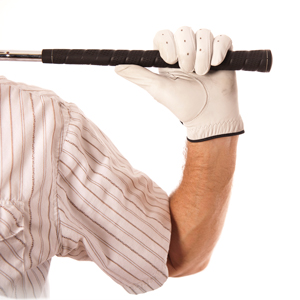 As an orthopedic specialist and avid golfer all-too familiar with elbow and shoulder pain, I have to admit I added rotator cuff tendonitis to my own chart a number of years ago.
As an orthopedic specialist and avid golfer all-too familiar with elbow and shoulder pain, I have to admit I added rotator cuff tendonitis to my own chart a number of years ago.
But the truth is, whether you’re in all-pro shape to begin with, or somewhat off your game from a fitness standpoint, most golfers know that their first round of spring doesn’t often look or feel as fantastic as we imagined it would. The game is rusty, and sometimes our shoulders and other joints feel rusty, too. While this pain may not be as intense as a true rotator cuff injury, it can be an extra aggravation for an already sub-par game come spring.
Is there anything that can be done during the cold, wet days of winter to keep in shape and prevent some of the painful events of that first outing – both in the joints and on the scorecard? Happily, the answer is yes. But it’s important to understand why this kind of pain occurs in the first place.
Pain from golf is more common than we might think. In fact, I would estimate that between 10 to 20 percent of the patients I see have problems related to golf, the game that can be played close to nine months of the year in Richmond. Some have new issues from the game itself, while others, especially older patients, aggravate existing problems when they play – namely, shoulder arthritis.
Different pain tends to be associated with different age groups. Younger patients might have what we call soft-tissue injuries, that is, those affecting the muscles, ligaments, and tendons. Rotator cuff injuries are the most common with this set. The rotator cuff is responsible for all of the movements of your shoulder, and there are lots of moving parts. Injury or stress on any single part can make the others work harder, causing even more pain. You may experience rotator cuff tendinitis, bursitis, or impingement—medical terms which all basically refer to rotator cuff pain, which limits function.
Older patients who are much more active than they used to be a few decades ago, tend to have problems with arthritis. This kind of arthritis is due to wear and tear and can be progressively painful.
To head off injuries that might pop up with the spring crocuses, it’s important to maintain year-round conditioning.
Flexibility is also key to preventing both arthritic and soft tissue pain. The two best ways to increase or maintain flexibility are swimming and stretching.
This is not your father’s stretching, though. Instead of the static stretching routine we are all used to, dynamic stretching is recommended. Trunk rotation and lateral bending, while constantly in motion, is believed to be much more effective. You should focus on your shoulders, of course, but also on your legs and lower back. A full stretch should take less than ten minutes, but really pays off in comfort later.
There are a number of websites with good information about exercises for golfers. Personal trainers are not necessary. You know your body better than anyone and you know what you need to do to maintain your strength and flexibility.
Although I’m an orthopedic surgeon, I am happy to report that good conditioning and a little care can prevent a lot of the aches and pains when we pick up those clubs in the spring. Keep in shape by adding a few simple exercises to your winter regimen, and your game just might improve – along with your attitude.



